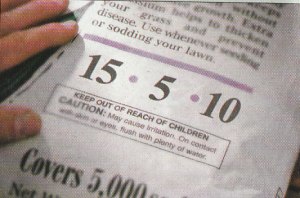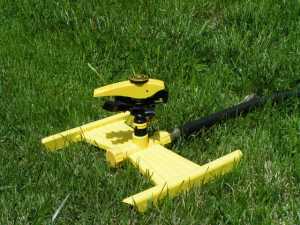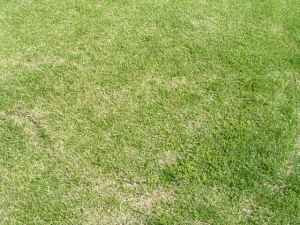Mowing your lawn is as essential to good lawn health as watering and feeding it. The real trick here is to know when to mow. Its not as hard as you might think, but it does require a little forethought.
 Every time you mow your lawn your cutting the blades of grass. When the blades are cut the root system will stop growing temporarily. This limits the amount of nutrients and water they can absorb. If your grass is cut to short the root system will be weakened. A weakened root system makes your lawn more likely to develop weeds, disease, and suffer badly from drought.
Every time you mow your lawn your cutting the blades of grass. When the blades are cut the root system will stop growing temporarily. This limits the amount of nutrients and water they can absorb. If your grass is cut to short the root system will be weakened. A weakened root system makes your lawn more likely to develop weeds, disease, and suffer badly from drought.
So how do you know how short to cut your lawn? The general rule is one-third of the total height should be cut when you mow your lawn. Cutting more than one-third of the grass plant severely shocks the plant and inhibits its ability to support its root growth. If your type of grass is best at a 2 inch height, you should cut it when it reaches 3 inches high. If its best at 3 inches, cut it at 4 1/2 inches. Once you figure out how high your lawn needs to be and when it needs to be cut, devise an easy system that will tell you it’s time to mow. The system I use is by remembering where the tip of the grass blades hit my shoe, that lets me know it’s time to mow.
Below is a list of the most common grasses and the optimum heights to be maintained:
Cool-season grasses
Kentucky bluegrass………………2 to 3 in.
Perennial rye grass………………..2 to 3 in.
Fescue, fine…………………………2-1/2 to 3-1/2 in.
Fescue, tall………………………….2-1/2 to 3-1/2 in.
Creeping bent grass……………..1/4 to 3/4 in.
Warm-season grasses
Bermuda grass……………………..1/2 to 1 in.
Buffalo grass………………………..2 to 3 in.
When your grass is healthy and growing, cut it to the lower height recommended. But if the grass is stressed by drought, disease, shade, pests or traffic, you will want to cut it to the higher recommended height.
When cutting your grass, never cut it when it’s wet and definitely not in the heat of the day. Your grass will be stressed enough due to the cutting, don’t add heat to the list. You should also alternate the pattern in which you mow your lawn. Mow at a 45 or 90 degree angle from the last mowing. So if you mowed from say the street to the house the last time, mow from side to side this time. It also helps to alternate with the 45 degree angle as well. This alternating patter will help avoid ruts from forming and get your grass to grow straight up instead of at an angle. You should also overlap each pass by 2 to 3 inches to make sure you get complete coverage.
be stressed enough due to the cutting, don’t add heat to the list. You should also alternate the pattern in which you mow your lawn. Mow at a 45 or 90 degree angle from the last mowing. So if you mowed from say the street to the house the last time, mow from side to side this time. It also helps to alternate with the 45 degree angle as well. This alternating patter will help avoid ruts from forming and get your grass to grow straight up instead of at an angle. You should also overlap each pass by 2 to 3 inches to make sure you get complete coverage.
Your lawn mower is the essential tool for keeping your lawn looking neat and trim, so keep it maintained. Make sure that the blade is sharp. A dull blade will tear the grass blades instead of cutting them. This tearing action causes more of a shock to the blades of grass than a nice clean cut. To know if your mower blade is to dull, just look at the ends of the grass you mowed the last time you mowed it. If it is ragged and split looking, the mower blade needs sharpening. Also, use a water hose to clean the underside of your mower each time you mow. This will remove loose grass and debris which will build up over time and reduce your mowers efficiency if it is not removed.
For a really in depth look at lawn care try Lawn Care Ebook
Have fun with you home improvement projects.
Filed under: Lawn | Tagged: Cutting Grass, Grass, Lawn Mower, Mowing, Mowing Your Lawn | Leave a comment »






